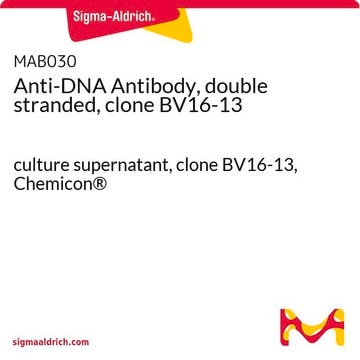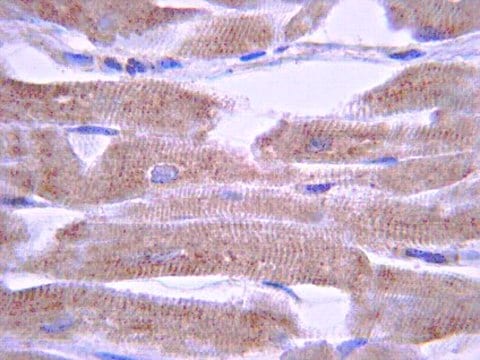CBL186
Anti-DNA Antibody, clone AC-30-10
clone AC-30-10, Chemicon®, from mouse
Synonym(s):
Deoxyribonucleic acid
About This Item
Recommended Products
biological source
mouse
Quality Level
antibody form
purified immunoglobulin
antibody product type
primary antibodies
clone
AC-30-10, monoclonal
species reactivity (predicted by homology)
all
manufacturer/tradename
Chemicon®
technique(s)
immunofluorescence: suitable
immunohistochemistry: suitable (paraffin)
isotype
IgM
shipped in
wet ice
target post-translational modification
unmodified
Specificity
Application
Sensitive detection of mycoplasma contamination in cell cultures.
For frozen and paraffin tissue sections.
Optimal working dilutions must be determined by the end user.
Epigenetics & Nuclear Function
Cell Cycle, DNA Replication & Repair
Physical form
Storage and Stability
Legal Information
Disclaimer
Not finding the right product?
Try our Product Selector Tool.
Storage Class Code
12 - Non Combustible Liquids
WGK
WGK 2
Flash Point(F)
Not applicable
Flash Point(C)
Not applicable
Certificates of Analysis (COA)
Search for Certificates of Analysis (COA) by entering the products Lot/Batch Number. Lot and Batch Numbers can be found on a product’s label following the words ‘Lot’ or ‘Batch’.
Already Own This Product?
Find documentation for the products that you have recently purchased in the Document Library.
Customers Also Viewed
Our team of scientists has experience in all areas of research including Life Science, Material Science, Chemical Synthesis, Chromatography, Analytical and many others.
Contact Technical Service









